Bake your own classic Parker House rolls, filling your kitchen with the tantalizing fragrance of yeast and butter. So soft and delicious! Even a novice baker can handle these.
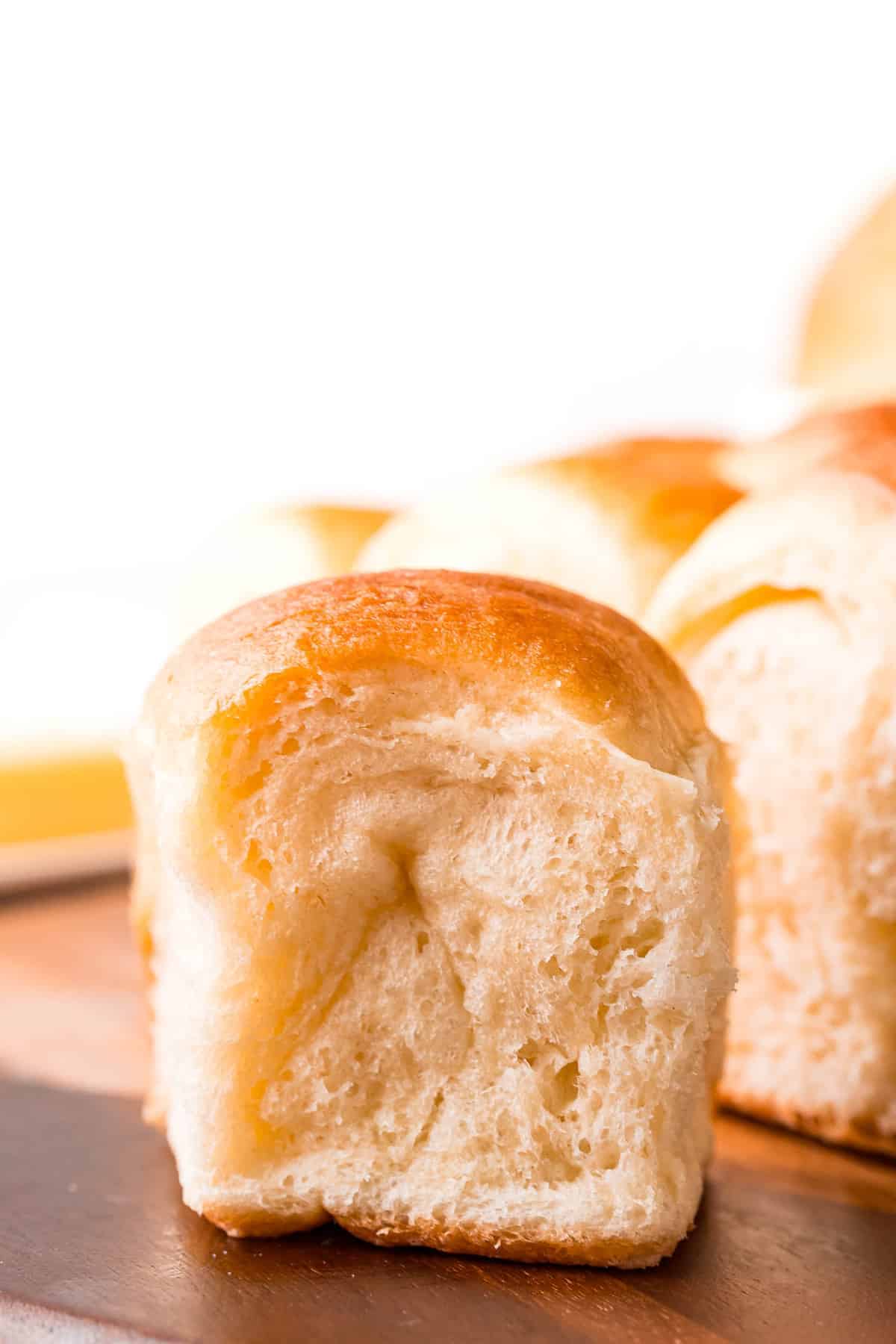
Is there anything quite like homemade yeast rolls? Hot out of the oven, crisp and brown on the outside, achingly soft on the inside, they just cry out for a pat of butter, or a drizzle of honey. And the smell of homemade rolls as they bake has got to be about the best smell ever!
You may be thinking that baking rolls is way above your skill level. It does take a little time to make homemade yeast breads like this but it’s not tricky and the effort is so worth it. Trust me, if I can do it, so can you! There’s a certain satisfaction about baking from scratch and you’ll be glad you took the time.
Parker House rolls are great with dinner but they are perfect for breakfast and lunch, too. My kids just love eating them for a snack when they get home from school. I would say any time is a good time for freshly baked rolls!
About Parker House rolls
These rolls are no-knead rolls but you will need a stand mixer with a dough hook. The mixer actually does the kneading for you.
Simply mix the flour, salt, and yeast, and then add the warm milk mixed with sugar, eggs, and lots of melted butter. Now it’s time for the mixer to get a work-out. You don’t have to do a thing, just let the dough hook and mixer knead the dough for six to eight minutes. Easy, right?
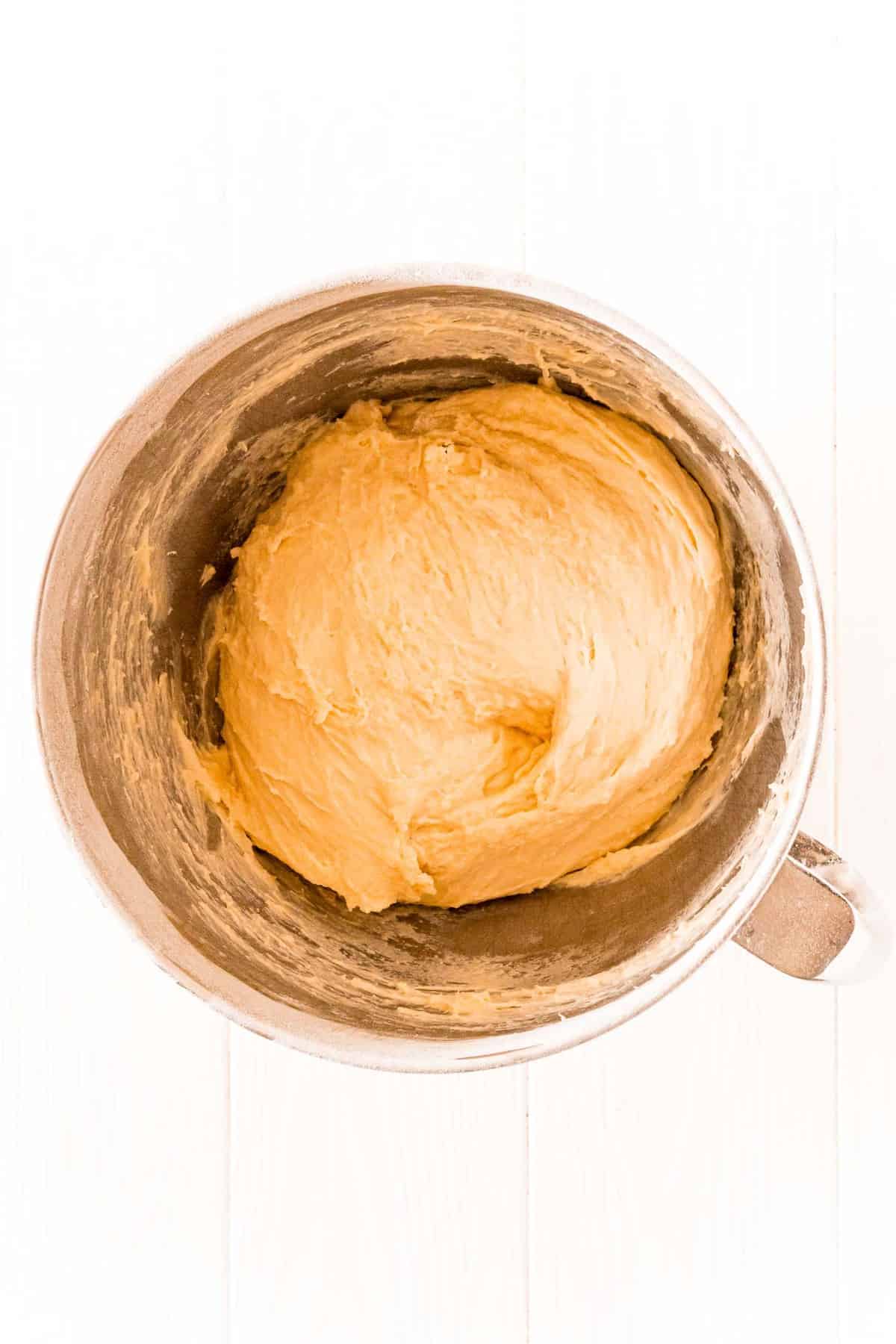
Remove the dough from the mixer, put it in a greased bowl and cover it with a nice cozy towel. Find a warm place for it to rise. My oven has a Proofing function which works perfectly. Another option is to turn your oven on warm (very low) while you’re getting the dough ready, then turning the oven off when you put the dough in. Your oven will stay warm for quite a while. You could also put a big pan of very hot water into the oven with the dough to keep it warm. It will take an hour to an hour and a half for the dough to double in volume.
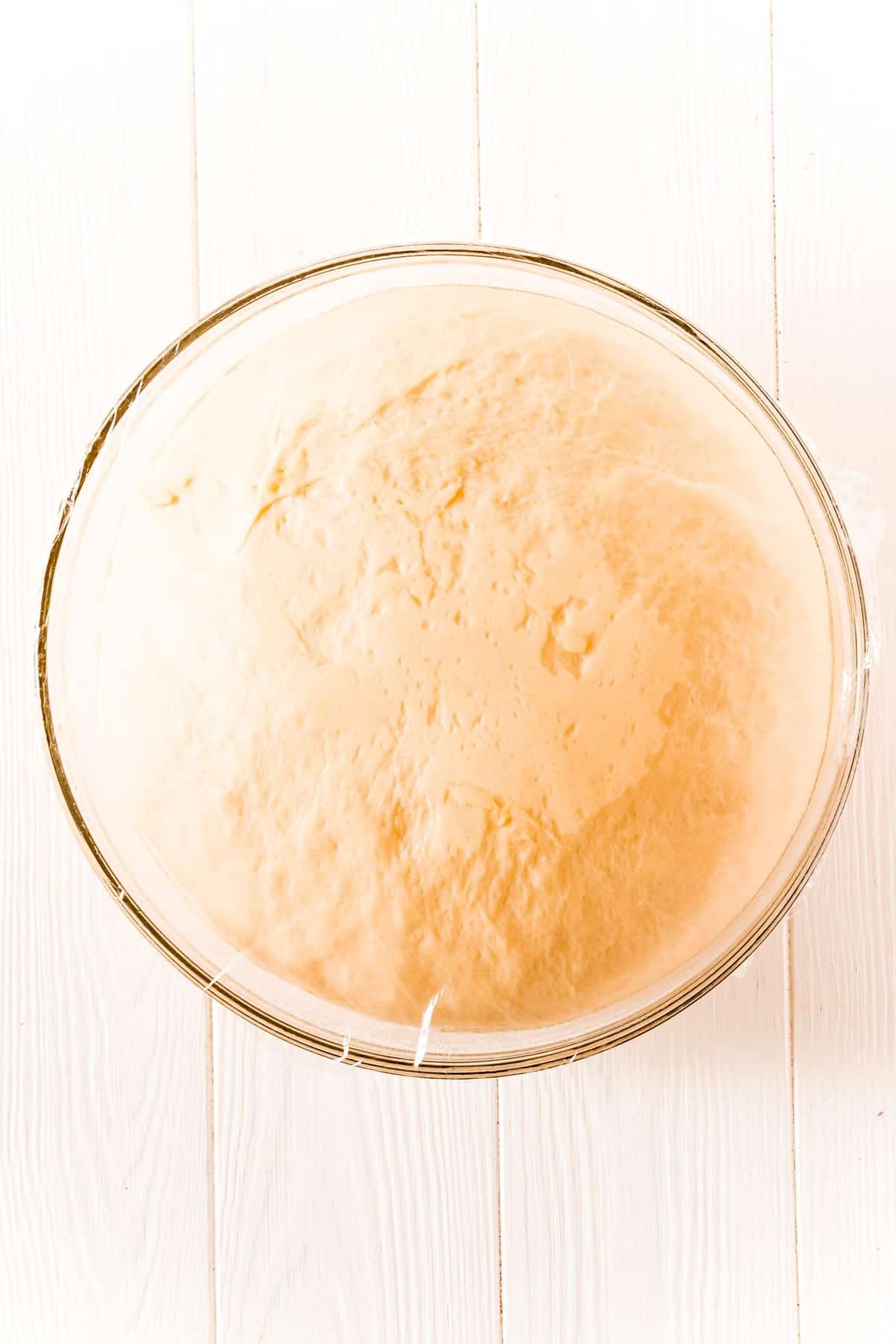
Once the dough is ready, divide it into two equal pieces, roll out each piece, and form into rolls. This is the fun part! You’ll love messing around with the dough. It’s so soft and squishy and it doesn’t stick to your hands. Really, you could make them into any shape you like: cloverleaf, crescent, simple balls, whatever.
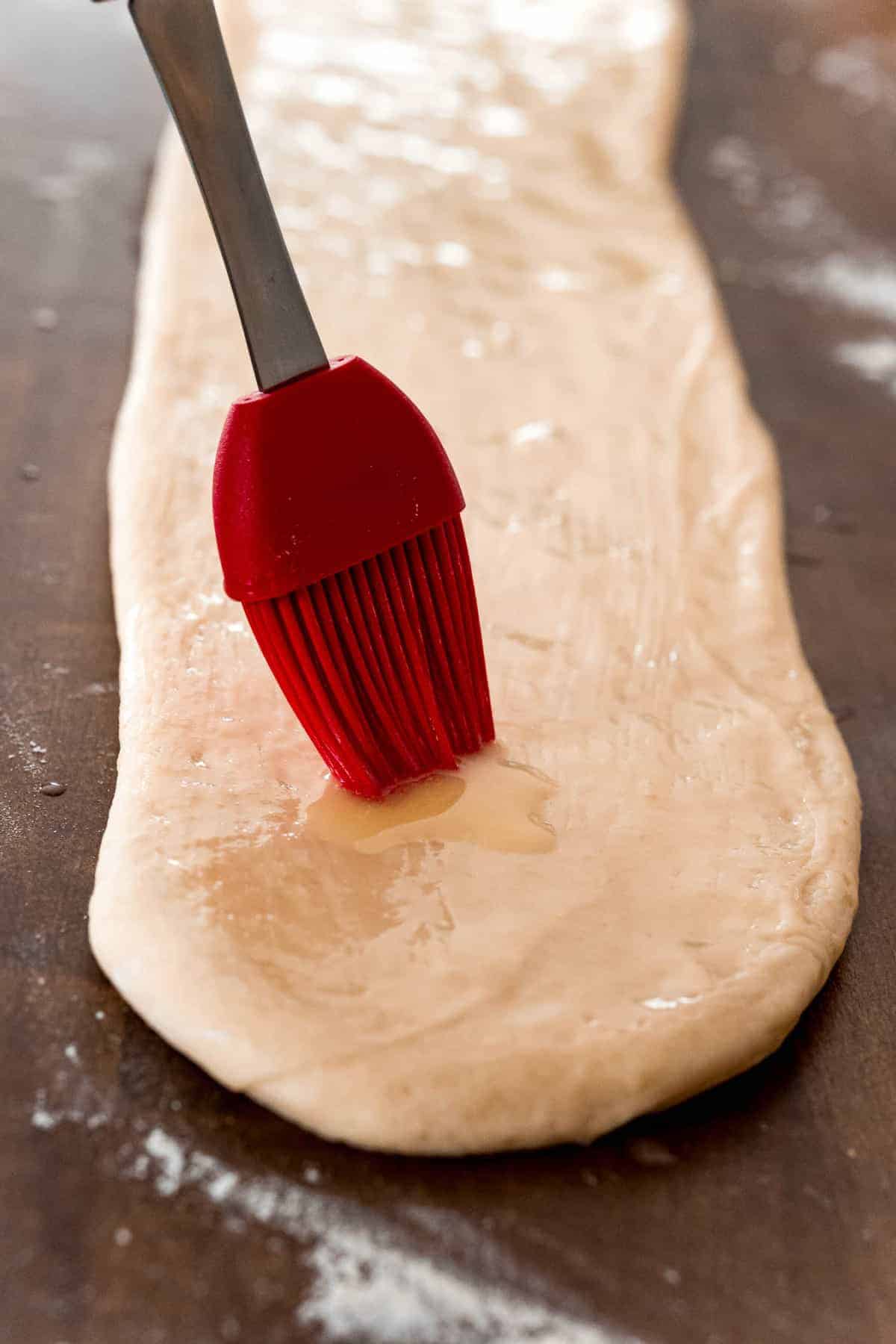
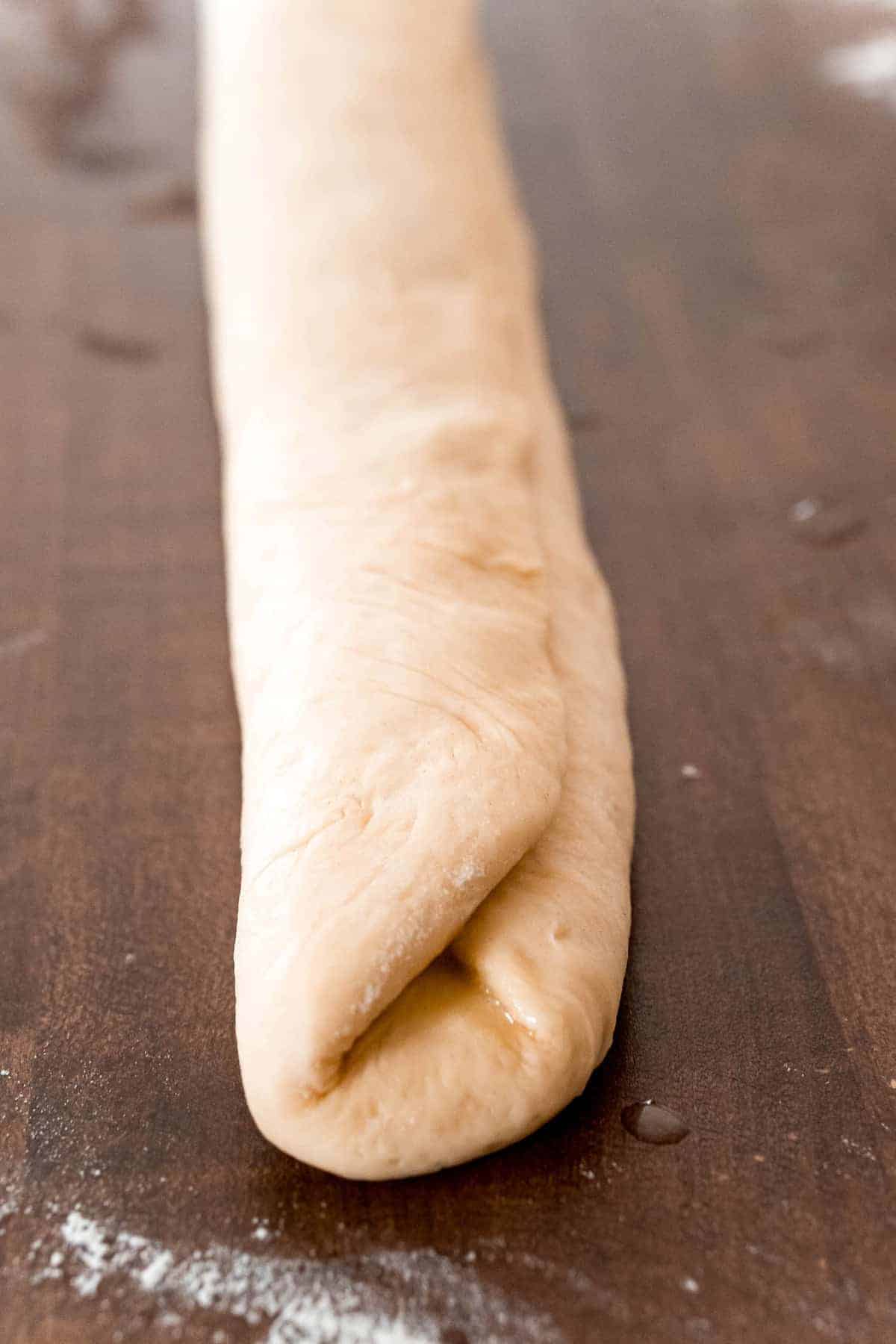
This recipe makes 24 rolls, which snuggle up to each other in one 9 x 13 inch pan. The rolls need to rise one more time after they are in the pan, about one more hour.
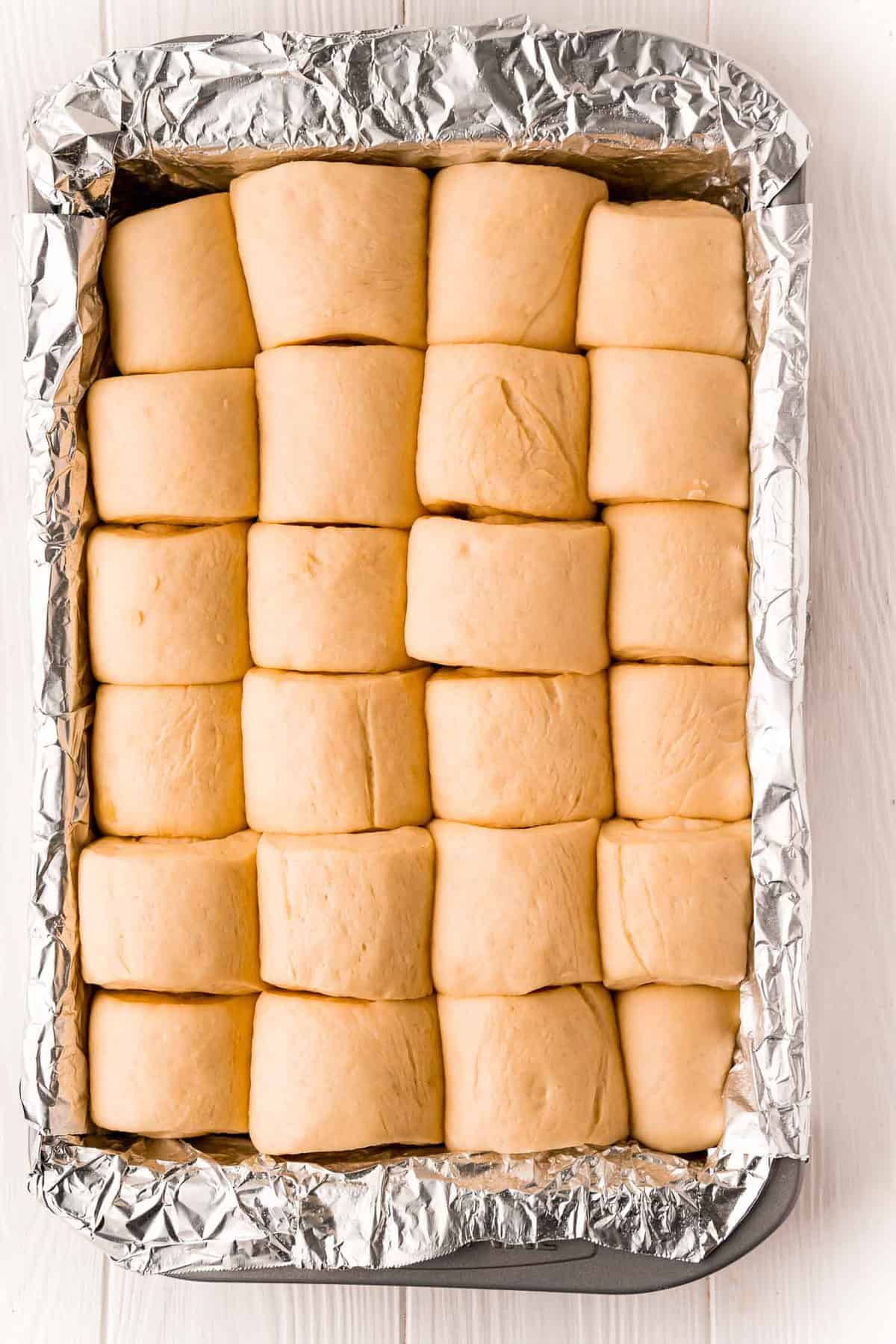
Bake and enjoy! You’re going to love these rolls!
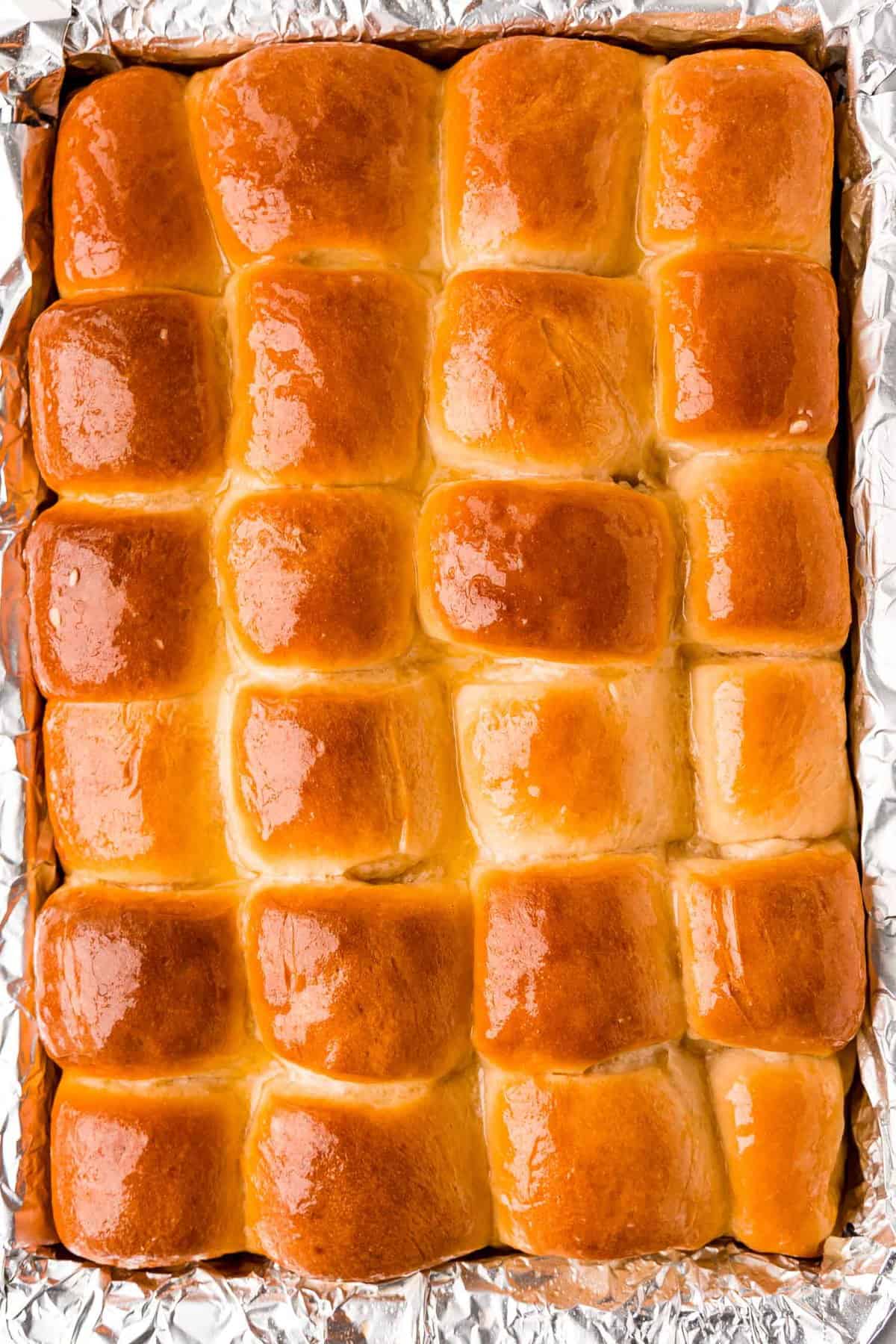
Why are they called Parker House rolls?
Allegedly, the original Parker House rolls first were made in the 1870s at the Boston Parker House Hotel. The dough was shaped in an oval and folded over which, when baked, formed a pocket of sorts for butter or jam. Parker House rolls are buttery, made with white flour, and have a touch of sweetness.
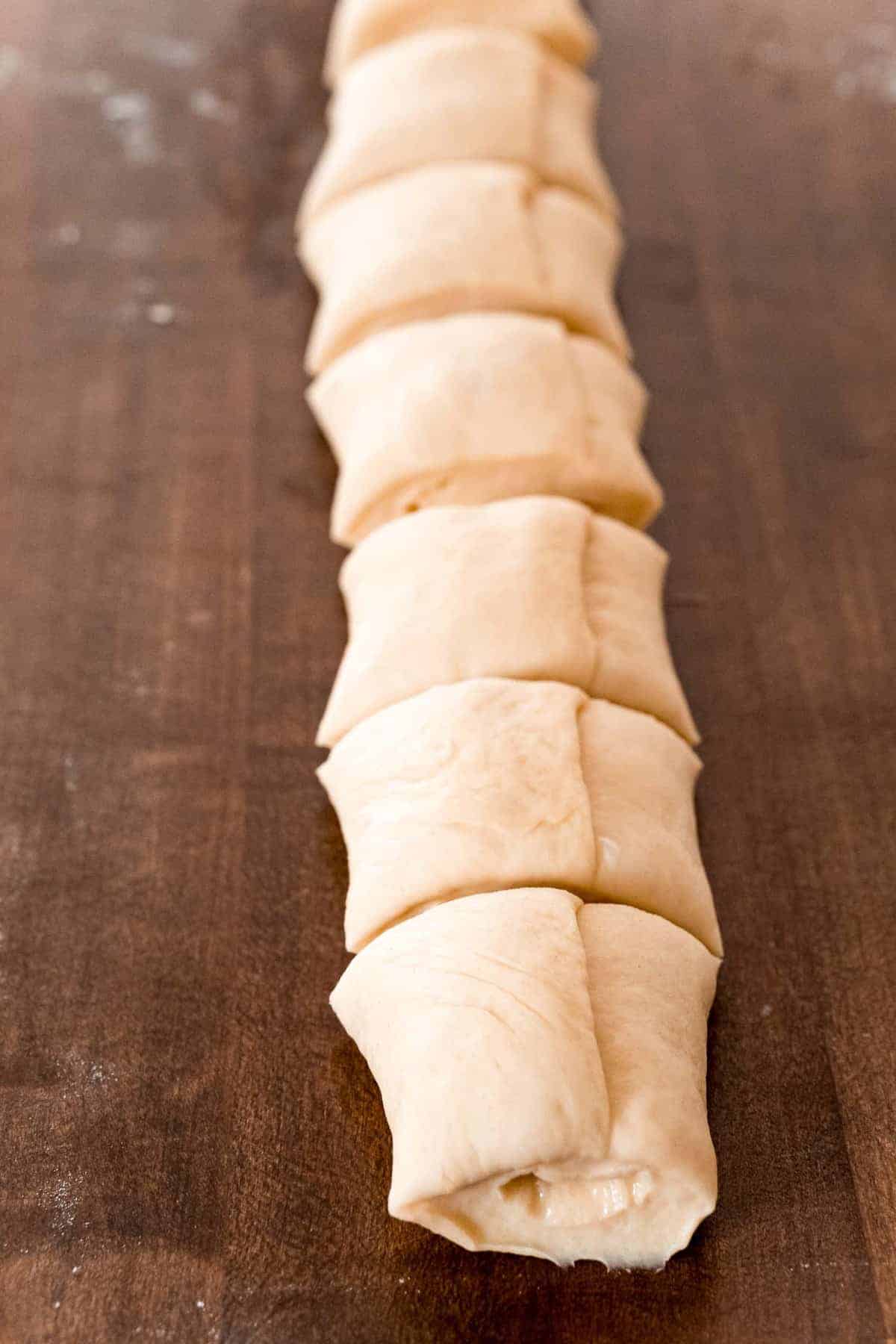
What’s in this recipe?
- All-purpose flour
- Instant yeast granules
- Sugar
- Warm milk
- Butter
- Eggs
- Salt
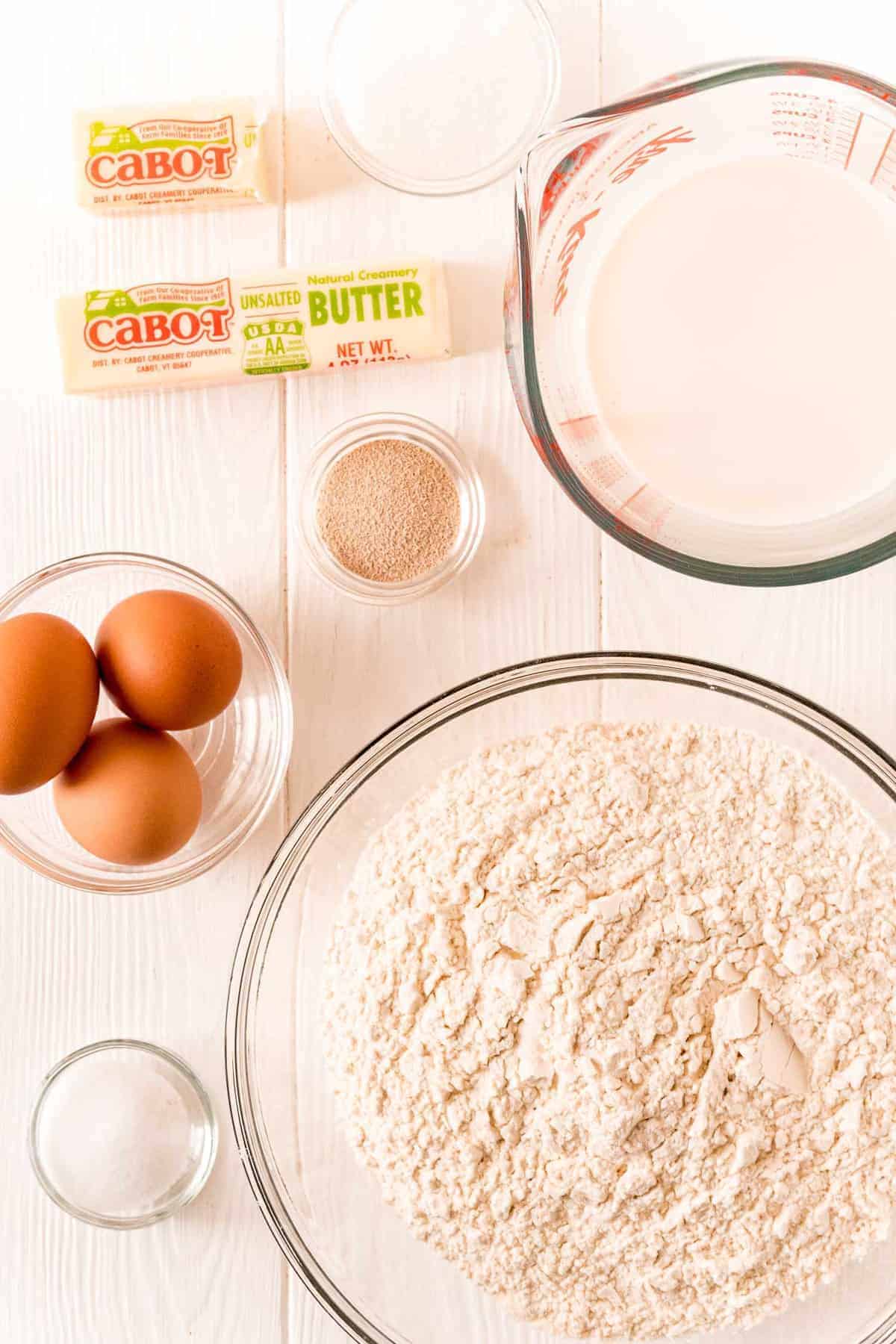
How to make this recipe your own:
Since this is a “classic” Parker House roll, if you make changes, you’ll no longer have a classic. But …
Like I mentioned above, you can shape the rolls in whatever form you like.
I like to brush the tops with melted butter when they come out of the oven but you could do an egg wash before baking, sprinkling the tops with Parmesan cheese, herbs, sea salt, or sesame seeds.
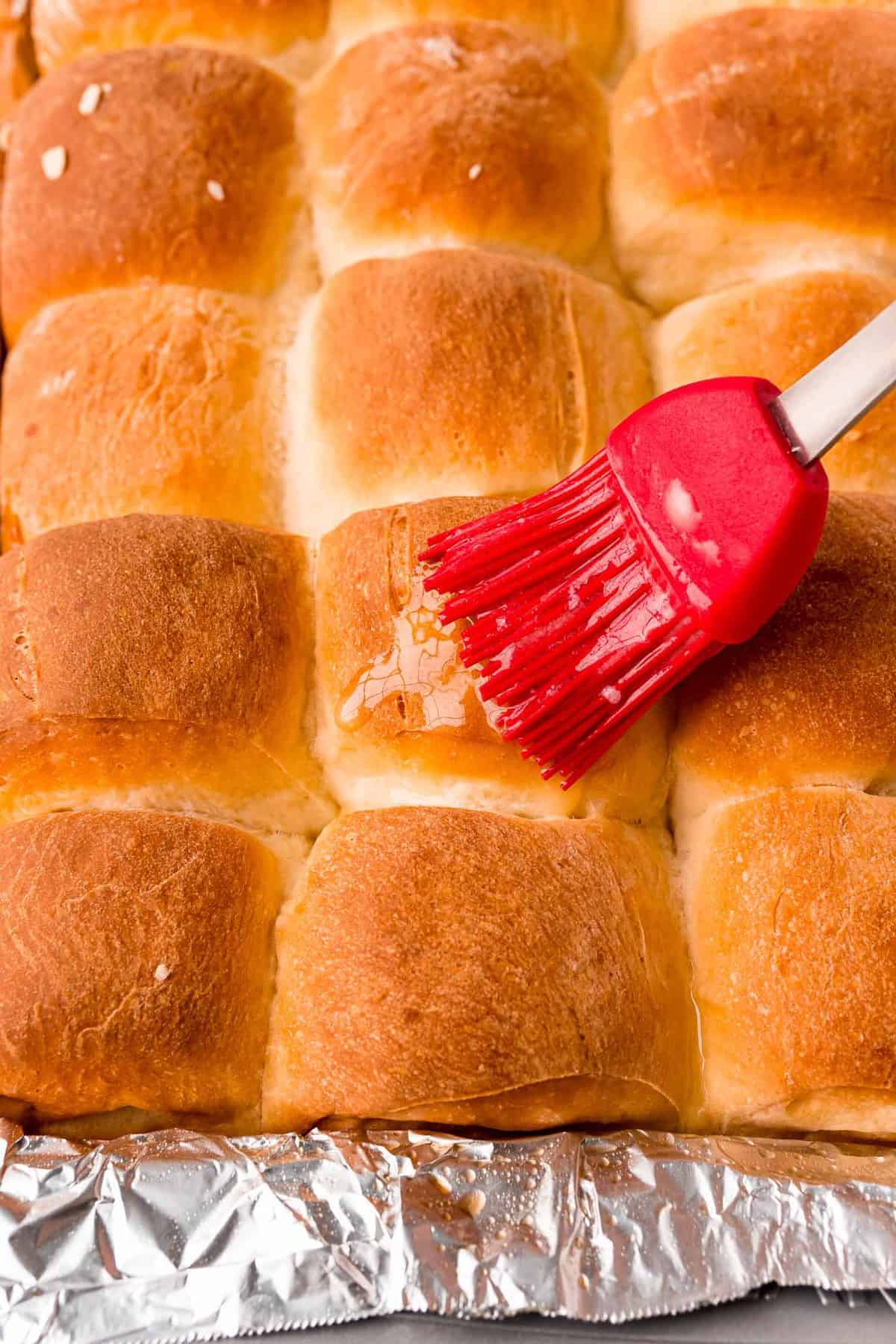
I haven’t tried whole wheat yet but I would guess that you could substitute whole wheat flour for at least a portion of the all-purpose flour. Just keep in mind that the more whole wheat flour you use, the heavier/denser your rolls will be.
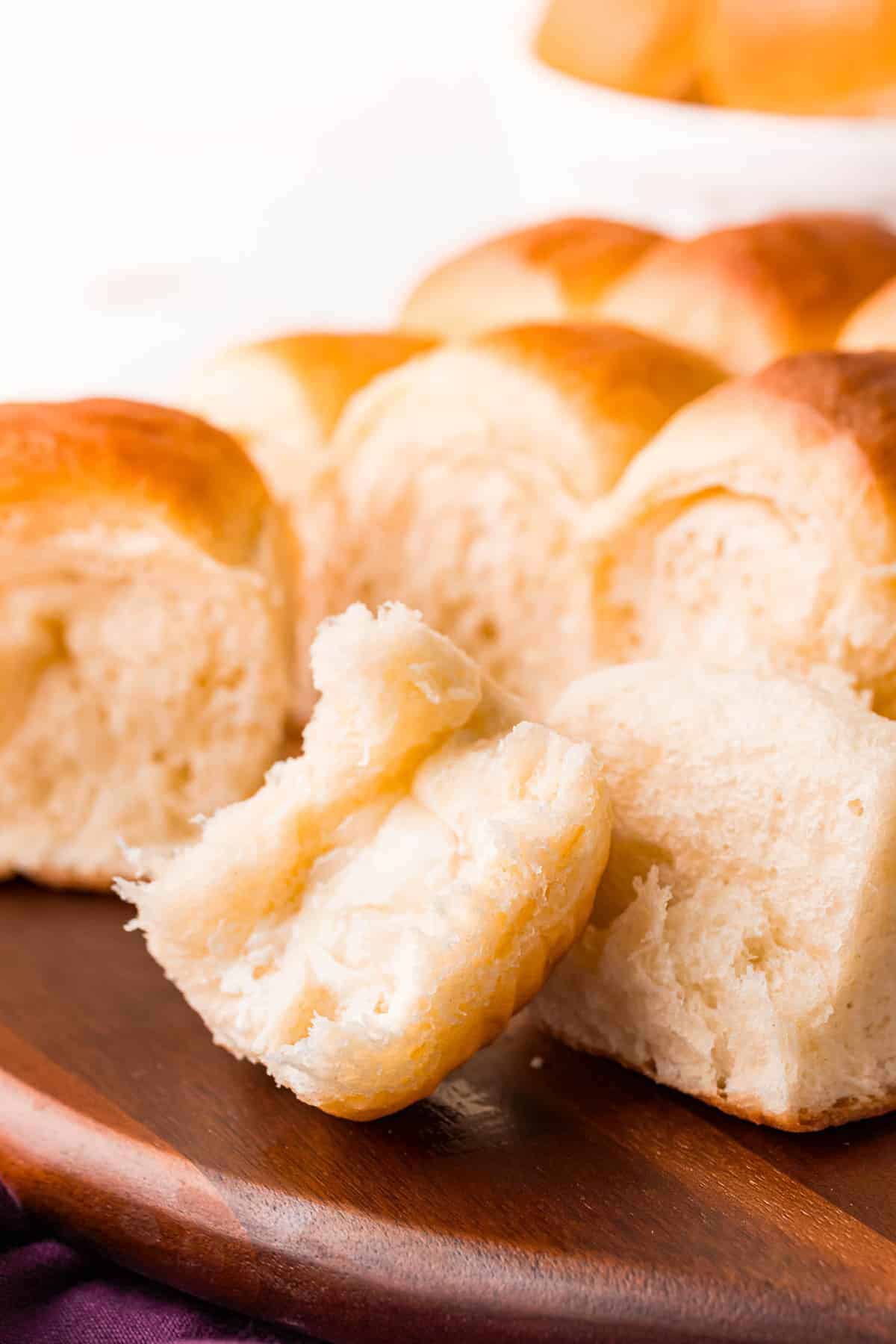
Storage and Make-Ahead Tips
Baked rolls that are cooled completely can be stored in an airtight bag or container for a couple of days on the counter. To freeze rolls, wrap in plastic wrap and place in a freezer bag and freeze for up to 3 months. To thaw, unwrap and let thaw at room temperature. To thaw quickly, preheat the oven to 200°F, unwrap the rolls, place on a cookie sheet, and bake for about 15 minutes.
Make-Ahead: Prepare the dough, cover it tightly and refrigerate overnight. This is the first rising. Form the dough into rolls, placing them into the baking pan, and let rise again. The second rise will take a bit longer since the dough is cold.
Alternatively, you could do the first rise normally, form the dough into rolls, cover tightly, and refrigerate. Let the rolls rise a bit after removing from the fridge, if necessary, before baking. Red Star Yeast has excellent tips for postponing baking.
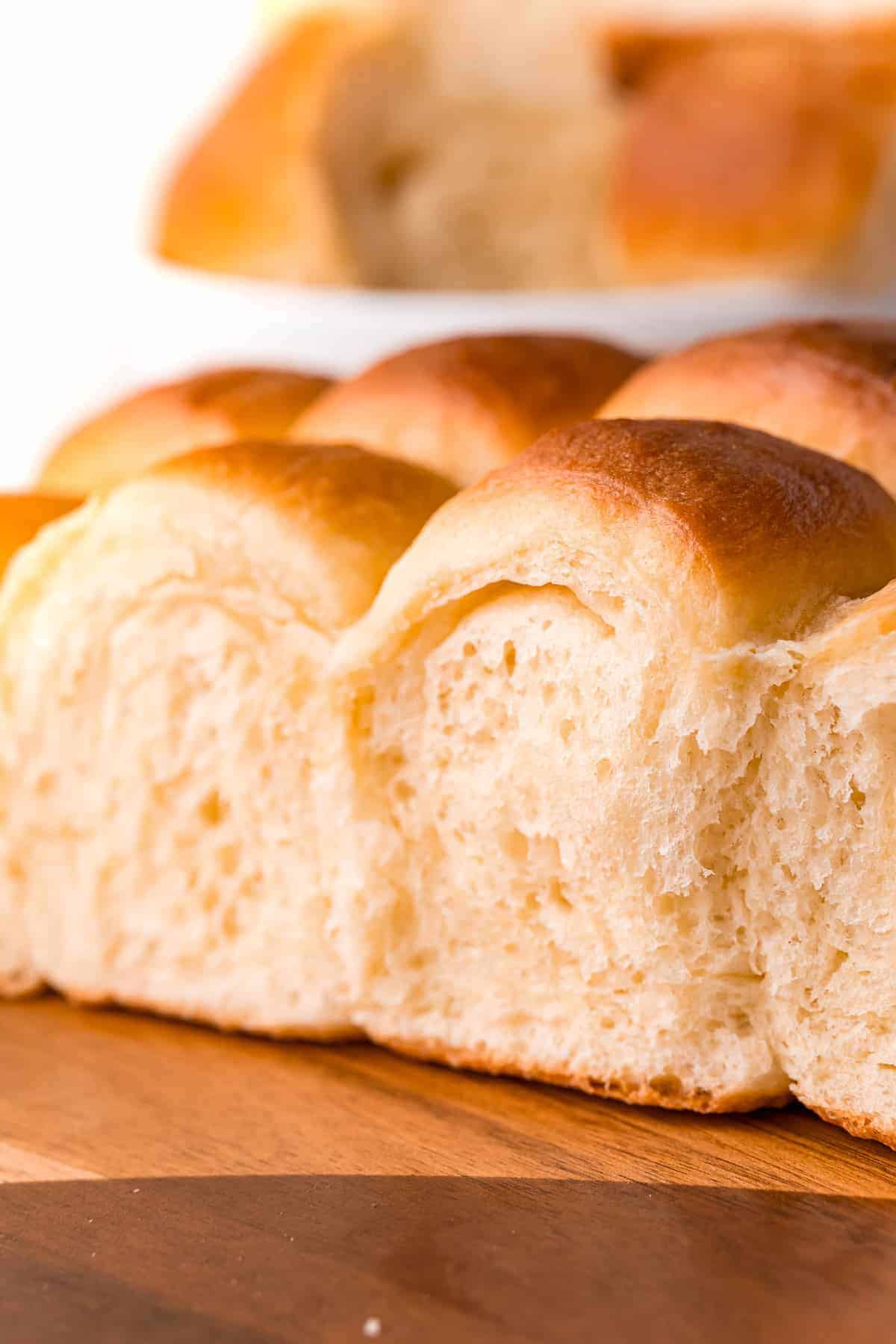
Are you on a “roll” yet?
Now that you’ve tried baking from scratch, I bet you can’t wait to do more! Try:
- No-Knead Whole Wheat Bread
- Naan Recipe — Easy Make-Ahead Dough!
- Cranberry Walnut Bread with Oats
- Healthy Cornbread Recipe (whole wheat)
- Almond Flour Bread — a gluten-free quick bread from my friend Erin at Well Plated
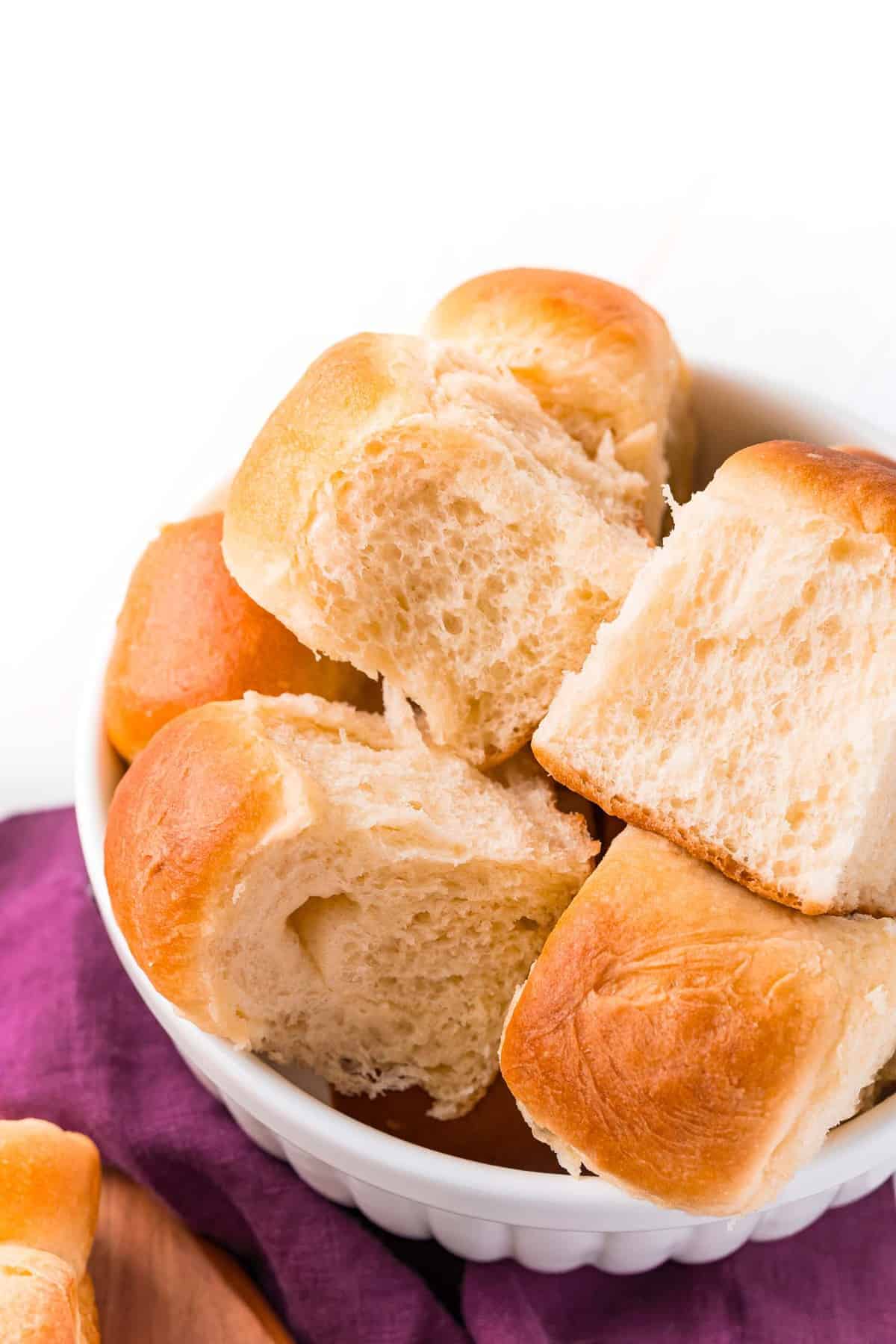
Parker House Rolls
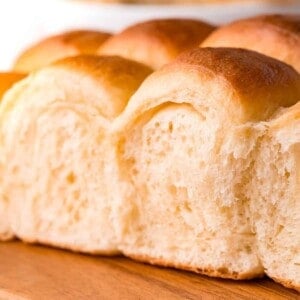
Ingredients
- 5 cups all-purpose flour
- 2¾ teaspoons instant yeast (see note)
- 2 teaspoons salt
- 3 large eggs
- 1¼ cups whole milk
- 12 tablespoons unsalted butter, divided
- 3 tablespoons granulated sugar
Instructions
- In the bowl of a stand mixer fitted with a dough hook, mix together the flour, yeast, and salt.
- In a medium bowl, lightly beat the eggs; set aside.
- In a medium saucepan, combine the milk, 9 tablespoons of butter, and the sugar and cook over medium-low heat until the butter melts, the sugar dissolves, and the mixture reaches a temperature between 125 and 130°F.
- With the mixer running on low speed, slowly add milk mixture to bowl followed by the eggs and mix until no dry flour remains, about 1 to 2 minutes. Increase speed to medium and knead until dough is smooth, elastic, and mostly pulls away from the sides of the bowl, about 6 to 8 minutes. The dough will still stick to the bottom of the bowl.
- Turn the dough out onto a lightly floured surface and knead by hand for 30 seconds. Form dough into a tight ball and transfer to a large, greased bowl. Spray the top of the bread lightly with nonstick spray, then cover the bowl with plastic wrap and let proof in a warm place until doubled in size, 60 to 90 minutes.
- Line a 13×9-inch baking pan with two pieces of foil or parchment paper, overlapping foil and letting the ends hang over the long edges of the pan. Spray the foil/paper with nonstick spray; set aside.
- Melt remaining 3 tablespoons of butter. Turn the ball of dough out onto a clean lightly floured surface and divide in half. Stretch each half into a 24-inch long roll and use a rolling pin to flatten it so it’s about 5 inches wide. Then brush the surface of the dough with 1 tablespoon of melted butter.
- Starting at the top long edge, fold a third of the dough down toward you. Then fold the bottom third of the dough over to meet the folded edge.
- Roll dough a couple of times to seal and reshape as necessary to form an even log.
- Using a sharp knife, trim 1 inch of dough off each end and discard, then cut dough into 12 equal pieces. Arrange rolls seam side down in the prepared pan in three rows of four. Repeat with the remaining half of the dough.
- Cover the pan with plastic wrap and let the rolls proof in a warm place until they are about double in size, about 60 minutes.
- Preheat the oven to 375°F and bake the rolls until browned and centers register 200°F, 30 to 35 minutes, rotating the pan halfway through.
- Transfer the rolls to a wire rack using the foil for handles. Brush with the remaining tablespoon of melted butter.
Notes
- It’s VERY important that your milk mixture is between 125 and 130°F because it needs to be hot enough to activate the yeast.
- Make classic dinner rolls: Make even portions of dough and shape them into balls.
- This recipe can use dry active yeast as well. Use 3 1/2 teaspoons of dry active yeast and add it to ⅓ cup of the milk heated to 110°F with a teaspoon of sugar. Let it activate for 10 to 20 minutes until foamy. The milk and sugar amounts will be reduced from the amounts in the ingredients, so you will still use the full amounts called for but they will be divided. The milk and butter mixture doesn’t need to be between 125 and 130F °in this case since you’re activating the yeast separately. It simply just needs to be melted and warm but not hot. Using dry active yeast will require up to an additional 30 minutes of proofing each time and will add about 1½ hours to the total prep time.
Nutrition
Nutrition information is automatically calculated, so should only be used as an approximation.
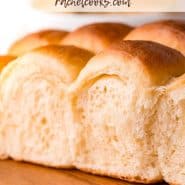
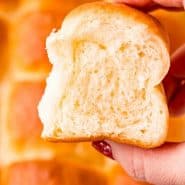
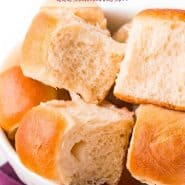
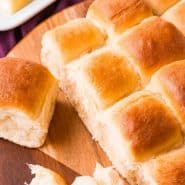

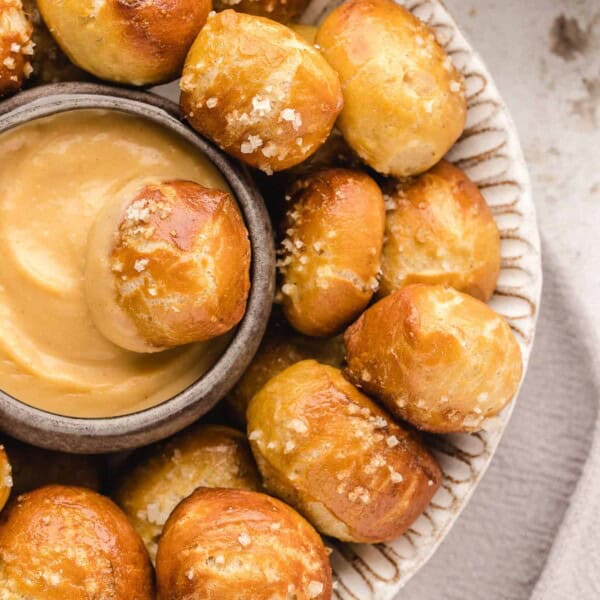











Could you use 2% milk or even buttermilk instead of whole milk?
I haven’t tested them with either of those, so I’m not sure, but I think 2% would be a safer switch than buttermilk.
I make a similar yeast roll, and my family oves them.
They’re completely irresistible!
I haven’t always had luck with yeast bread recipes, but these came out great. I made the dough in my food processor. My family loved them. These will become my best rolls.
So happy to hear it! Thanks for taking the time to leave a comment!